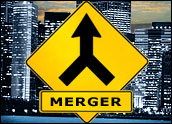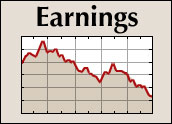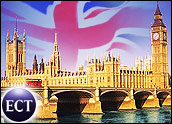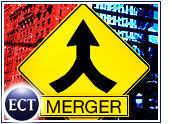
The average size raised for an IPO (initial public offering) in 2007 was US$229 million, according to IPO Home. That translates into a market cap valuation averaging over $1 billion for companies that are going public.
The marketplace for IPOs has changed dramatically since 2000, when the Internet IPO frenzy imploded. Since that time, small boutique underwriters have virtually disappeared and the surviving larger firms such as UBS, Goldman Sachs and JPMorgan are underwriting much larger deals. Most of those deals are now based upon companies that can exhibit strong financial fundamentals inclusive of a proven track record and a history of earnings.
This leaves a huge gap in the marketplace for emerging growth companies that have a need to go public but do not possess billion-dollar valuations. So what are the alternatives for companies who wish to go public to expand their business and gain access to the capital markets? The answer may be to seek a reverse merger into an Over the Counter Bulletin Board (OTCBB) Shell.
For Emerging Growth Firms
In its simplest form, a reverse merger refers to the process whereby a private company merges into and with an existing public company to establish itself as a public company. Typically, the public company with which the private company merges has a shareholder base and some assets but is no longer a functioning business; hence, it is often called a “public shell.”
In years past, reverse mergers were associated with penny stock scams which were subject to manipulation by promoters. However, after several rounds of SEC (Securities and Exchange Commission) rule changes and the collapse of the IPO markets in late 2000, OTCBB Shells emerged in 2003 as the de facto IPO marketplace for emerging growth companies.
Today, companies that reverse into an OTCBB Shell must adhere to the same stringent rules and regulations as set forth for companies who are listed on NASDAQ (National Association of Securities Dealers Automated Quotations), AMEX (American Stock Exchange) or the NYSE (New York Stock Exchange). The basic difference is that the emerging growth companies that trade on the OTCBB do not yet meet all of the listing requirements set forth by the stock exchanges: namely, the combination of earnings, assets, net worth, number of shareholders and minimum trading price for shares.
Public Image
The image of reverse mergers as a legitimate vehicle to go public has improved measurably in the recent years. The SEC no longer views reverse mergers as its redheaded stepchild. There are several key reasons for this assessment:
- Stringent new rules introduced by the SEC over the last five years;
- SEC rule revisions passed in 2007 to assist small companies in raising capital;
- Through its recent actions and commentary, the SEC now recognizes reverse mergers as a legitimate way for small companies to go public;
- There are now more reverse mergers performed per year than there are IPOs;
- Barrier of entry. The cost of an OTCBB Shell attracts companies that have revenues and earnings or substantial financial backers; and
- Equity investments via PIPEs (private investments in public entities) will increase with the introduction of the reduced six month hold period on 144 stocks.
Advantages of a Reverse Merger
There are several advantages of the reverse merger for emerging growth companies. However there are three critical areas of importance:
ol.thisol { font-weight:bold }ol.thisol span {font-weight:normal }
- Cost. Reverse mergers usually cost significantly less than an IPO. The total cost will be less than $1 million, inclusive of the cost of the shell, financial audits and attorney fees. However, there are alternatives that can reduce those fees substantially. If a company is generating revenues and profits and has an intriguing business model, then it is possible to attract a shell owner who will take a combination of cash and equity, or sometimes straight equity participation. This would substantially reduce the full cash outlay of approximately $600,000 to $900,000 to purchase the shell.
An IPO, on the other hand, is much more expensive, costing at least $2 million before factoring in investment banking fees, underwriting commissions and road shows to raise capital. With an IPO there is no guarantee at the end of the day you will go public. Your underwriter could back out of the deal for a variety of reasons: lack of interest, industry perception, market timing, etc. If your IPO is canceled, all of the money you have spent is literally down the drain.
- Timeliness. If you are performing a reverse merger into a “shell company” you will need to have your audits finalized before you close on the shell. Why? Because the SEC mandates you have to file your 8K within four days from the date you file for the reverse merger. The entire process takes sixty to ninety days from the time you first file your 8K with the SEC. If time is of the essence and you need to get your deal to market sooner rather than later, then a reverse merger into an OTCBB shell is the best route to take. Because you are reversing into a company that is already public, you have eliminated the possibility that your company will not be publicly traded.
In contrast, a typical IPO takes nine months to a year to complete and, if problems occur, it can take several more months.
- Market Conditions. Many times, management has a window of opportunity in which to take their company public. This could be the result of current market conditions or a perception that their company is in a hot, new multibillion-dollar industry. Whatever the reason, you know it is in your best interest and the company’s to get public as soon as possible. The good news is that you can expedite the process of going public through a reverse merger much quicker than an IPO. Also, is once you have filed your 8K with the SEC you can then start the process of raising capital. Fund managers are more likely to invest in your company once they know they have the ability “cash out” through your public vehicle.
As the industry gains traction, you will start to see more and more companies using the reverse shell merger as their preferred choice for going public.
If you have an interest in learning more about reverse mergers, go here.
Ralph Amato is founder and CEO of Ventana Capital Partners, which specializes in reverse shell mergers.

















































Social Media
See all Social Media